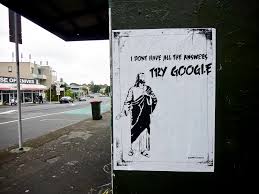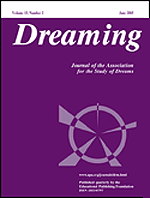 On Friday, February 19, I will visit with C.G. Jung Society of Atlanta and give a talk on “Big dreams: Religion, science, and Jung’s theory of highly memorable dreams,” followed by a workshop on Saturday titled “Dreaming as Theater of the Psyche.” I wrote the following essay for the Society newsletter as a prelude to the talk and workshop. Anyone who lives in the Atlanta area is welcome to join us!
On Friday, February 19, I will visit with C.G. Jung Society of Atlanta and give a talk on “Big dreams: Religion, science, and Jung’s theory of highly memorable dreams,” followed by a workshop on Saturday titled “Dreaming as Theater of the Psyche.” I wrote the following essay for the Society newsletter as a prelude to the talk and workshop. Anyone who lives in the Atlanta area is welcome to join us!
“Big dreams,” as originally conceptualized by C.G. Jung, are rare, extremely vivid, and highly memorable dreams that people experience as being dramatically different from the relatively mundane and forgettable contents of “little dreams.” To appreciate the importance of this distinction between big and little dreams, one has to accept the basic premise that dreams in general have some degree of meaning. Unfortunately many psychologists in the years after Jung lost confidence in that premise, due to scientific developments that seemed to cast doubt on the whole enterprise of dream research. During the latter half of the 20th century few investigators devoted much time or energy to studying the more unusual and intensified forms of oneiric experience Jung characterized as “big” dreams. Now, however, thanks to the 21st century technological developments in cognitive science and data analysis, a better case can be made for the psychological significance and therapeutic value of dreaming in general, and highly memorable and impactful big dreams in particular. The time is ripe for a new approach to the kinds of dreams Jung referred to as the “richest jewels in the treasure-house of psychic experience.”
Jung’s mentor in the study of dreams, Sigmund Freud, was not especially interested in distinguishing between different types of dreams, big, little, or otherwise. Freud’s main goal was to illuminate the unconscious roots of a dream in the childhood wishes, fears, and fantasies of the dreamer. In his view the dream itself is irrelevant and can be ignored once the underlying wish has been identified. Indeed, because Freud’s theory posited that dreaming serves to protect sleep against disturbing eruptions from the unconscious, a big dream could be seen as a total failure of the basic function of dreaming. In his therapeutic work Freud did focus on strong emotions, unusual images, and character metamorphoses in his clients’ dream reports, all of which are frequent markers of big dreams, so he had some practical familiarity with the value of intensified dreaming. But he never took the next step of examining the distinctive qualities of these dreams and reflecting on what they mean for our psychological understanding of the human mind. That step was left for Freud’s erstwhile friend and follower, Jung.
Jung actually took two important steps that helped open the way for further investigation in this realm. In addition to naming the fundamental difference between average dreams and highly intensified big dreaming, Jung also recognized the importance of studying dreams in a series, across a period of time. He found in his clinical work that looking at a series of dreams, not just single dreams in isolation, enabled a better perspective on the psychological dynamics of the person’s life than could be gained from any one dream alone. Not only was this an invaluable insight for therapeutic purposes, but it also provided a way of clarifying the big dreams concept. To say precisely what makes a dream unusual and extraordinary, it helps to know what counts as the usual and ordinary patterns of dreaming. Studying a series of dreams can identify those general patterns so it becomes easier to determine with more specificity what makes big dreams so big.
Both Freud and Jung developed their ideas about dreams from the same sources of knowledge: their personal experiences, their clinical practices with mentally ill patients, their deep readings of classical philosophy and theology, and their early inklings of the significance of Darwinian evolution for theories of human nature. In therapeutic terms, Freudian and Jungian approaches to dream interpretation worked: they enabled clients to express emotionally important concerns and difficult feelings, and they gave therapists a new window into their clients’ unconscious conflicts. The practical value of including dreams in psychotherapy has never been seriously questioned by those with actual experience in the process, and recent works by Clara Hill and Milton Kramer show how vibrant this area of study remains.
However, as time went on mainstream psychologists found it increasingly difficult to support the theoretical claims of the early pioneers of dream study. Two blows in particular prompted great skepticism towards Freudian and Jungian approaches, leading to a general eclipse of interest in dreams of any type or variety through the better part of the 20th century. The first blow was the discovery of two fundamentally different kinds of sleep, known as Rapid Eye Movement (REM) and Non-Rapid Eye Movement (NREM) sleep by American researchers, and referred to as Paradoxical Sleep (PS) and Slow Wave Sleep (SWS) by French researchers. Both sets of terms refer to regular cycles of variation in the levels of activation throughout the brain during an ordinary night’s sleep. Researchers soon found that dream recall was closely associated with the most intense phases of activation during the sleep cycle, which suggested that dreams were caused by automatic processes of the neural system in sleep (this isn’t actually true, but it seemed so for many years). These findings made it much harder to argue that a psychological approach could reach the “deepest” levels of a dream’s meaning, since neuroscience had apparently shown that the deepest cause of a dream is a purely physiological process in the brain during sleep.
The second blow came from systematic studies of dream content, like those of Calvin Hall and Robert Van de Castle starting in the 1950’s. These researchers accepted the idea that dreams contain some degree of psychological meaning, but they wanted to use quantitative methods to identify where those meanings might be found. The major discovery from this line of research was the simple continuity of dream content with waking life concerns. People tend to dream about the chief concerns of their regular daily lives. Most dreams, according to these findings, involve rather ordinary and mundane content: being in familiar places, with familiar people, doing familiar things. Contrary to their popular portrayal as bizarre and outlandish nonsense, dreams tend to portray fairly straightforward accounts of people’s feelings about their most important relationships, activities, and concerns in waking life.
The statistical research on dream content highlighted a genuine weakness in Freudian and Jungian dream theories, namely a narrow basis of evidence in terms of having access to broad, diverse sources of empirical evidence about dreaming. The research on REM sleep highlighted another weakness of Freudian and Jungian theories: losing connection with the best scientific understandings of the interaction between mind and brain, psyche and soma. Together, these two weaknesses undermined the credibility of Freud’s theory of dreams as wish-fulfillments aimed at protecting sleep and Jung’s theory of dreams as compensations for the excesses of consciousness. Neither theory could account for the neurological sources of dreams or for their mundane, generally trivial content. Jung’s interest in big dreams appeared especially questionable in this light, as it seemed to lead in exactly the opposite direction from where the best scientific evidence was pointing.
Throughout this time, clinicians and therapists kept doing their good and valuable work with dreams, but “eclectically,” with little theoretical guidance or grounding in empirical research. Few mental health professionals have received any training or instruction whatsoever in how to work with clients’ dreams. A few years ago when co-writing a book about dream education, Dreaming in the Classroom with Phil King and Bernard Welt, we were surprised and saddened to find so few schools of professional psychology offering any classes or course modules on the subject of dreams.
Several intrepid investigators have in recent years pursued detailed studies of the phenomenology of big dreams. Harry Hunt, Roger Knudson, Don Kuiken, Mark Solms, Tracey Kahan, Jayne Gackenbach, Ryan Hurd, and others have contributed to a better understanding of what Hunt called “the multiplicity of dreams,” but the overall tenor of 20th century psychology took a decidedly negative turn toward the study of dreams, and therapists today are still paying the price.
Fortunately there are increasing signs of another major shift in dream research that bodes well for greater attention to big dreams in coming years. These signs of change emerge from the same two sources of scientific research that seemed so discouraging for the study of dreams in previous decades. The neuroscience of sleep has now advanced to a point of recognizing the truly remarkable complexity and sophistication of the brain’s activities during sleep. Far from a mental desert devoid of conscious activity, sleep in fact involves a wide variety of cognitive processes operating in ways that are different from, but not necessarily inferior to, those in the waking state. At various points during REM or Paradoxical Sleep, the brain’s overall electrical activation (as measured by EEG devices) equals or even exceeds the levels seen in the brain during waking. These and other findings make it clear that the sleeping brain is more than capable of generating the kinds of emotionally charged, visually intense, cognitively complex experiences that Jung characterized as big dreams.
Just as importantly, the systematic study of dream content has expanded to include more than just “most recent dreams” gathered from college students. Careful analysis of various kinds of dreams, including nightmares, lucid dreams, childhood dreams, death-related dreams, and other kinds of highly intensified dreaming, have shown that there are distinctive patterns of form and content that correlate to a remarkable degree with the latest neuroscientific findings about the brain’s activities during sleep. The ability to identify these kinds of correlations has been improved by database technologies that allow researchers to quickly and reliably analyze large collections of dream reports, compare their word usage frequencies with other collections of dreams, and highlight significant patterns of similarity and difference. The Dreambank (dreambank.net) website of G. William Domhoff and Adam Schneider, along with my Sleep and Dream Database (sleepanddreamdatabase.org), are two resources for exploring the use of these technologies and experimenting with different kinds of dreams and different applications.
Jung’s approach to the study of dream series can be deepened with these new tools for identifying recurrent patterns and tracking changes over time. This has exciting potentials not only for therapeutic practice but also for theoretical insight into the nature and functions of big dreams. The more we learn about the meaningful dimensions of a series of dreams, the better we will be able to appreciate the singular dream experiences that stand out from the ordinary flow of dreaming, the experiences that Jung felt were unique openings into the most profound reaches of the psyche. The brain-mind science of the 21st century might finally be ready to verify Jung’s early insights about big dreams and develop them in creative new directions.




